Chitrashala Press
Chitrashala Press produced some charming children's pictorial alphabet cards for early learning purposes in the 1940s.

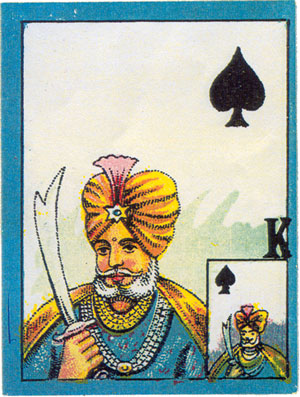
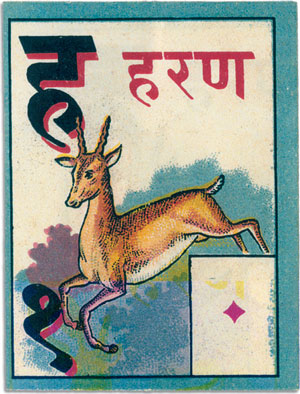
Chitrashala Press, Poona, India
The Chitrashala Press of Pune (formerly Poona) was located in West Central India in today’s Maharashtra state where the Marathi language is spoken. Chitrashala Press endeavoured to print traditional Indian cards (Dasavatara Ganjifa) in the same style as hand-painted Indian cards. They also produced some charming children’s pictorial alphabet cards for early learning purposes.
The Children’s Alphabetical Packs, c.1940
At least three different editions of the cards were published; two with Marathi text and a third edition in Urdu. The cards were obviously intended as a game for fun but also with an educational agenda, i.e. the teaching of reading, matching and etiquette.
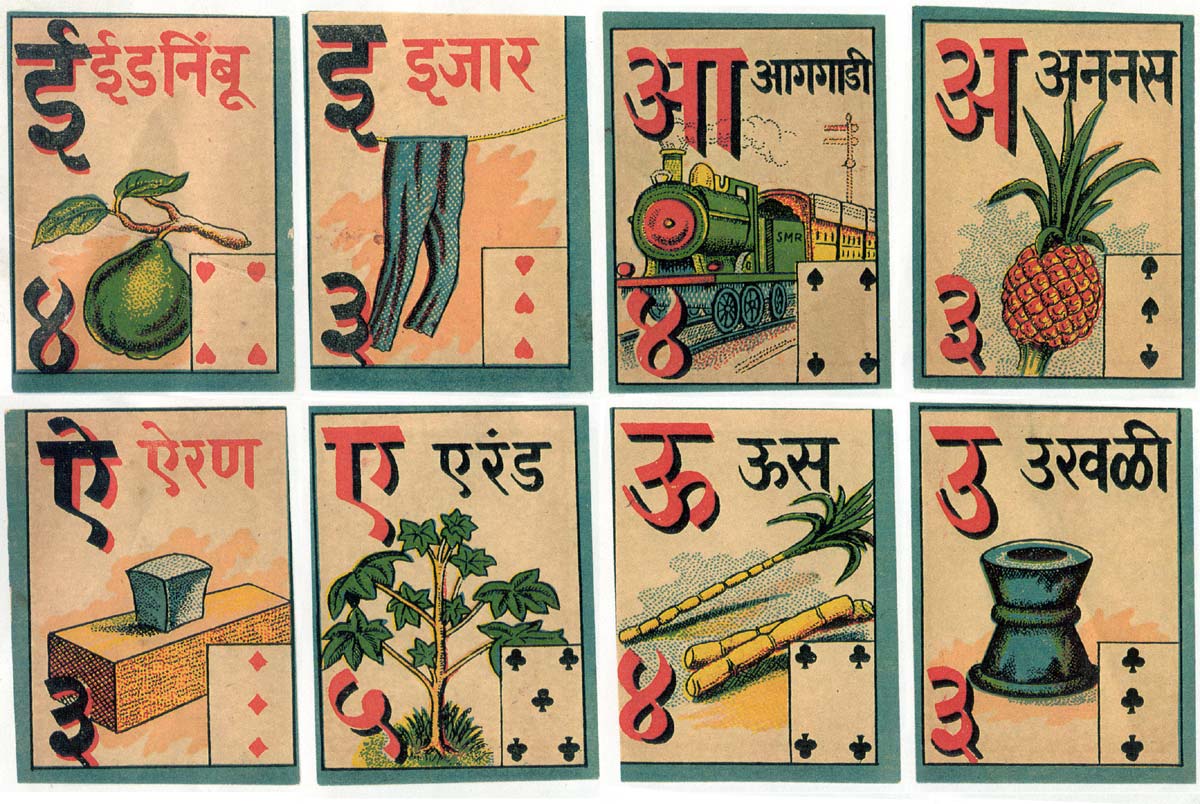
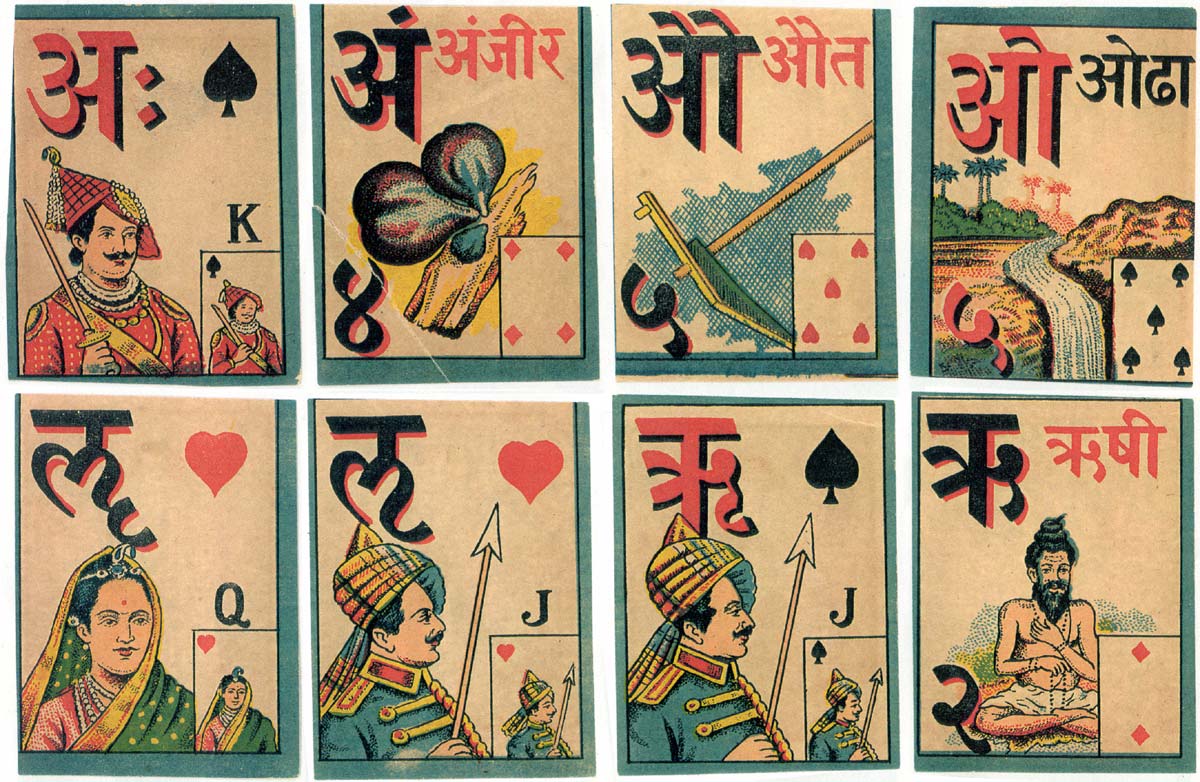
Above: cards from the first edition of picture playing cards for children, published by Chitrashala Press, Pune, India, c.1940. The images on the numeral cards show everyday objects such as ships, trains, rivers, a holy man or yogi, fruit, animals and a fire altar. The Kings and Queens are Maharajas and Maharanis and the Jacks are princes.
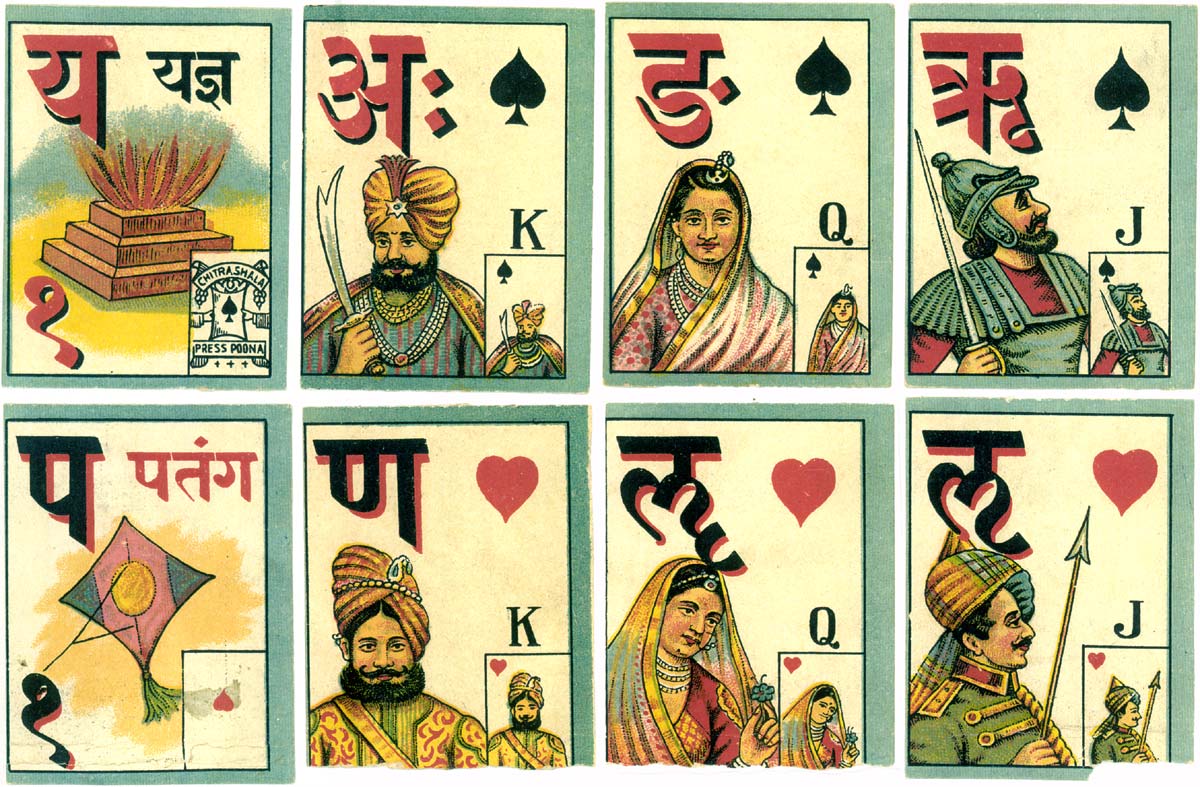
Above: second edition of picture playing cards for children, virtually identical to the first edition but with new illustrations for the court cards, published by Chitrashala Press, Pune, India, c.1940. The Kings and Queens show a Maharaja and Maharani, and the Jacks are princes. The Roman letters K, Q and J are used to denote the ranks of the court cards. There are no Arabic number indices, but the values of the numeral cards are shown in the bottom left-hand corners. At the top of the cards are the first letter of the words written in Marathi, in the opposite colour to that of the suit sign.
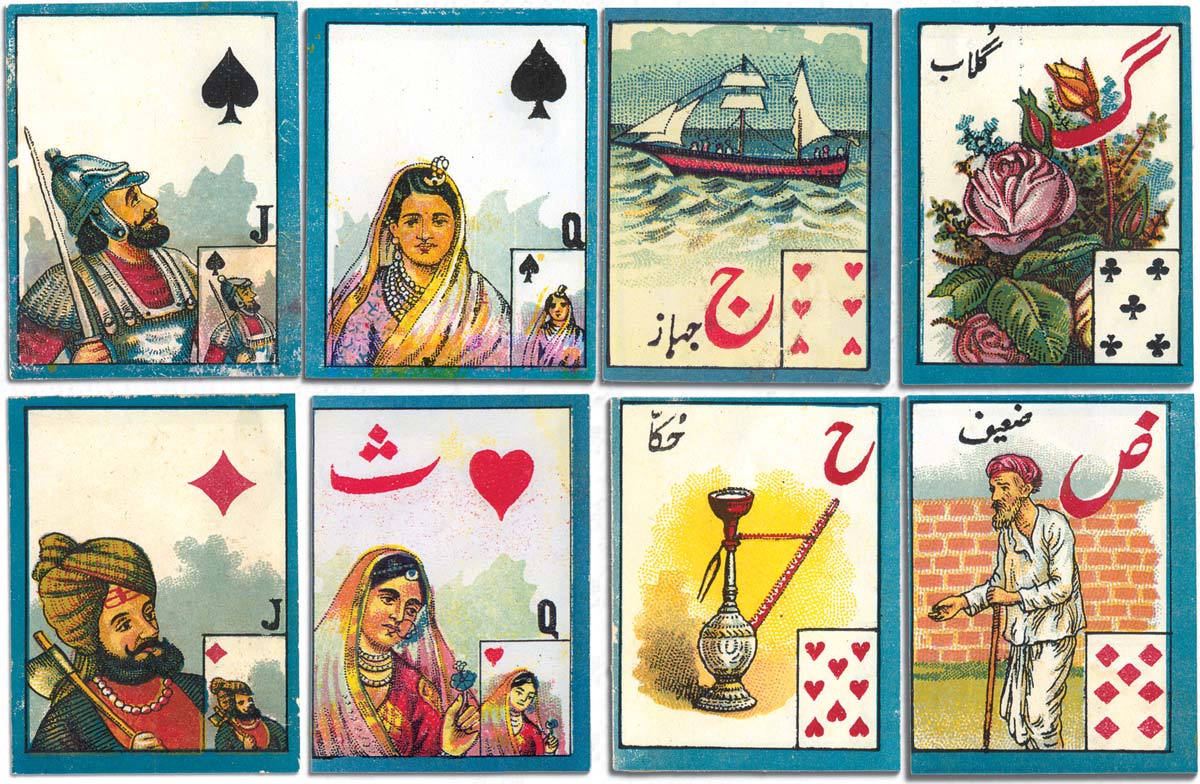
Above: cards from the Urdu edition of picture playing cards for children, published by Chitrashala Press, Pune, India, c.1940. This edition shares the same educational objectives as the Marathi packs but depicts characteristics of Muslim culture such as a mosque, etc. The court cards share the same images as the second Marathi edition.
Educational or Instructional playing cards have been around since the 16th century. See also: Logica Memorativa by Thomas Murner, 1507 • Robert Morden's Map Cards, 1676 • Arms of English Peers, 1686 • Proverbial Cards, 1698 • Mechanical Instruments, c.1700 • Geistliche Karten, 1718 • Cartes Questions-Devinettes, c.1840 • Happy Families • Jaques' Illustrated Proverbs, c.1885 • Spanish Instructional Cards, 1888 • Japanese Uta Garuta • Children's Maxim Cards from Uruguay • Change for a Shilling, c.1930 • Snip Snap, 1968 • Learn Thai Playing Cards, 2009
REFERENCES
Gordhandas, Kishor: Playing-Cards of the Chitrashala Press - part 1, in 'The Playing-Card', Journal of the International Playing-Card Society, vol.30, no.3, Nov/Dec 2001, pp.132-138.
See also: Dasavatara Ganjifa►

By Simon Wintle
Member since February 01, 1996
I am the founder of The World of Playing Cards (est. 1996), a website dedicated to the history, artistry and cultural significance of playing cards and tarot. Over the years I have researched various areas of the subject, acquired and traded collections and contributed as a committee member of the IPCS and graphics editor of The Playing-Card journal. Having lived in Chile, England, Wales, and now Spain, these experiences have shaped my work and passion for playing cards. Amongst my achievements is producing a limited-edition replica of a 17th-century English pack using woodblocks and stencils—a labour of love. Today, the World of Playing Cards is a global collaborative project, with my son Adam serving as the technical driving force behind its development. His innovative efforts have helped shape the site into the thriving hub it is today. You are warmly invited to become a contributor and share your enthusiasm.
Related Articles

Scientific Whist
“Scientific Whist” : standard cards with instructions for play on the faces by Chas Goodall & Son, 1...

Historic Shakespeare
“Historic Shakespeare” playing cards featuring Shakespearean characters by Chas Goodall & Son.

Heartsette by Herbert Fitch & Co, 1893
A glimpse into a busy print and design office in late Victorian London.

Rap Rummy
Rap Rummy made by Parker Brothers in 1926, only 4 years after the discovery of King Tutankhamen’s to...

German Travel Cards
A travel-themed educational deck helping American tourists visiting Germany.

Can You Believe Your Eyes?
“Can You Believe Your Eyes?” playing cards featuring visual illusions & other oddities.

The European Interchanges Quartets
A card game based around motorway intersections from European countries.

Love Tests
Vintage novelty “Love Test” cards of a slightly saucy nature but all in good fun!

Briefmarken-Quartett
Quartet game featuring postage stamps from the Zones of Occupation in post-WWII Germany.

Doctor Who Trump Card Game
Game for two players in which Doctor Who and the Legendary Legion join battle with the Alien Hordes....

Baraja de Juan Martín Zamorano
Deck inspired by El Pendón de los Zamorano, a military pennant dating from 1501, published by Priego...

Polygo™
Cards of irregular, four-sided shape for playing word and colour games as well as more traditional o...

The UCR Deck
Giant-size cards designed by Thomas Sanders to advertise courses and facilities at UCR.

Verkeers Kwartet
A helpful quartet game celebrating the 75th anniversary of road safety exams making traffic safer.

Pirritx eta Porrotx
Happy Families card game from the Spanish Basque Country.

Question and Answer Games
A card game called “Impertinent Questions and Pertinent Answers” was launched in the early 1920s by ...
Most Popular
Our top articles from the past 28 days

